The most anticipated portion of our visit to Grenada was the fabled Alhambra. We spent most of a day touring it. Its magnificent is overwhelming. I was thankful that we were there in winter because it would have been unbearable (for me, anyway, with my horror of crowds) in high season. Even so, there were certain sections where we had timed tickets since they manage the number of people present at any one time.
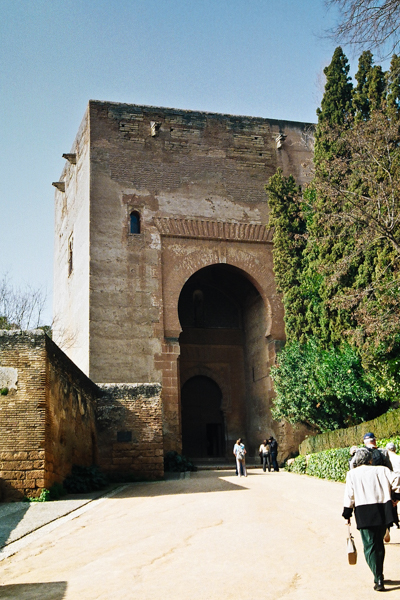
We entered through the Gate of Justice, shown here, There is a hand carved on the outer arch and a key on the corresponding position of the inner arch, but there is no definitive interpretation of these symbols.
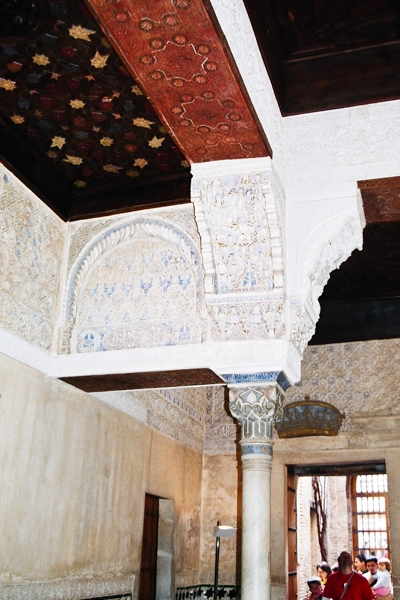
The Council of Ministers met and the sultan dispensed justice in the Mexuar. It is one of the older parts of the Alhambra, built in the 14th century, and has been much altered. For example, the ceiling was added in the 16th century when an upper floor was needed.
We now know that Greek and Roman marble sculptures were painted, and likewise much of the now-white decoration of the Alhambra was colored. Remnants of the coloring can be seen here. Serious sensory overload!
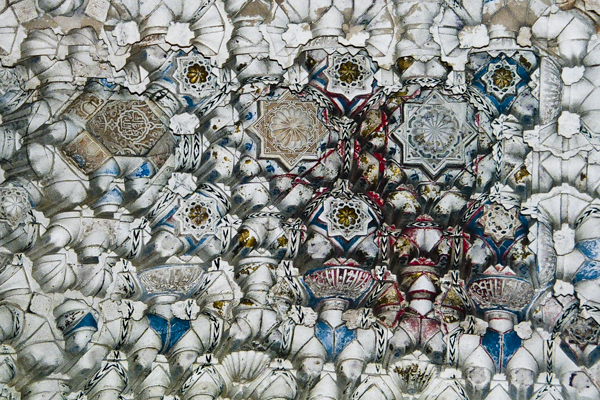
Here is a close-up of another area where some color remains. The intricate pattern of the relief is stunning in itself, and the delicate tracery of the coloring adds another layer. The time and talent that went into the construction was immense.
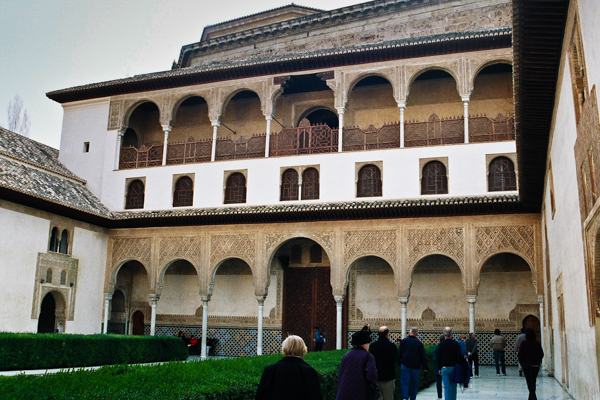
The courtyard is the center of the Hispano-Muslim household. The Court of the Myrtles has a reflecting pool surrounded by myrtle bushes. The screened windows above the arches were where the ladies of the household lived. They could see out without being seen.
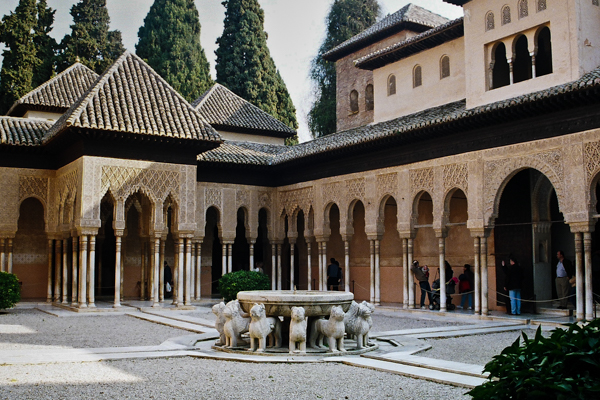
The Court of the Lions is perhaps the most famous location within the Alhambra.
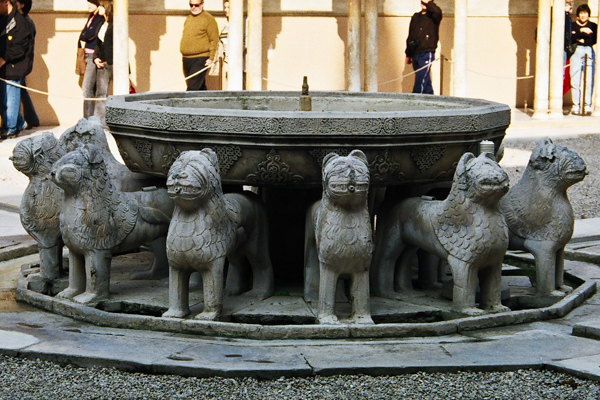
A close-up of the fountain. In the years since there has been extensive restoration designed to preserve the lions and restore the water system. The entire court was closed and ripped up. It reopened in early 2012 and the fountain is operational again.
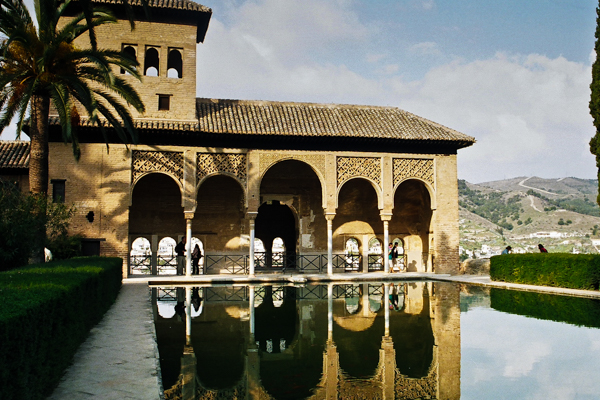 My notes from the time of our visit
did not identify
this delightful pavilion and it wasn't until 2025 that I was able to
identify it from Google Street View. It is the
Partal Palace,
the oldest surviving palace in the Alhambra.
My notes from the time of our visit
did not identify
this delightful pavilion and it wasn't until 2025 that I was able to
identify it from Google Street View. It is the
Partal Palace,
the oldest surviving palace in the Alhambra.
It was a private residence until the late 19th century and has been much altered from its original state.
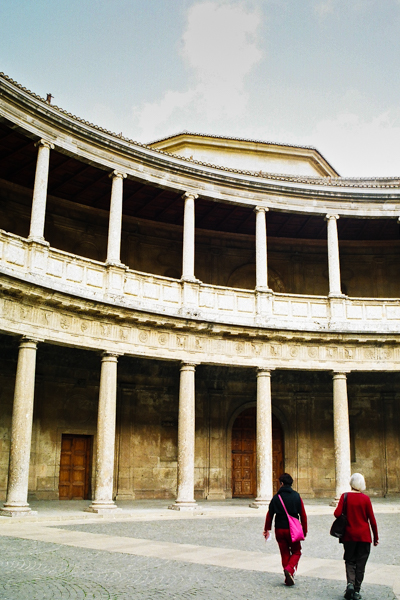
Ferdinand & Isabella seized the Alhambra during the reconquista, which ejected the Muslim leadership that had ruled Spain for several hundred years.
Charles V, Holy Roman Emperor, AKA Charles I of Aragon & Castile, was the grandson of Ferdinand and Isabella. He visited the Alhambra and determined to make it one of his retreats. He made many changes to various structures in anticipation.
As it happened he never did take up residence there. Nevertheless, many older buildings were demolished in order to build this neoclassical palace that was started in 1527, abandoned in 1637, and only finished in 1967!
As beautiful as it may have been in another context, the dissonance between this structure and its surroundings was striking.
At least it isn't a parking lot -- it's a museum -- two, in fact. We didn't visit either one.
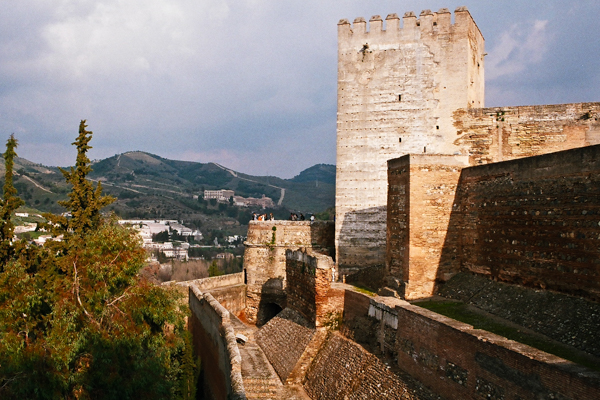
Although beautiful, the Alhambra was built as a fortress. This portion is called the Alcazaba.
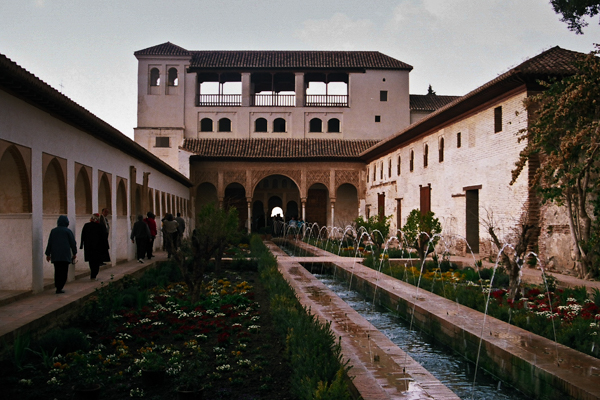
The Generalife (hen-er-al-LEE-fee) was the rural retreat of the sultans. It was dedicated to cultivation and grazing and was a place of gardens.
This particular section is known as the Court of the Main Canal. Even though it was winter and pretty chilly, this protected garden was full of flowers.
Click your "back" button to return to the previous page or click for our picture album.